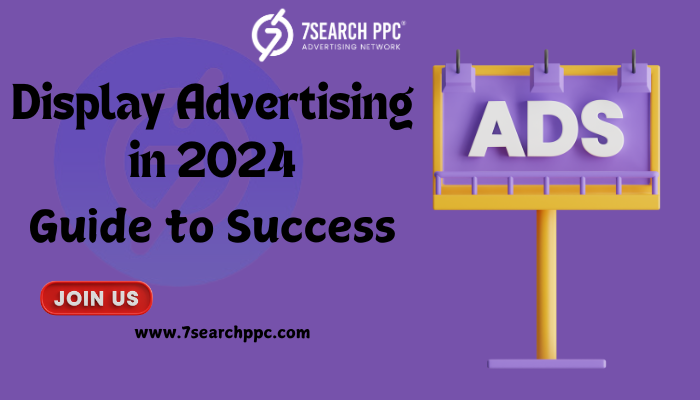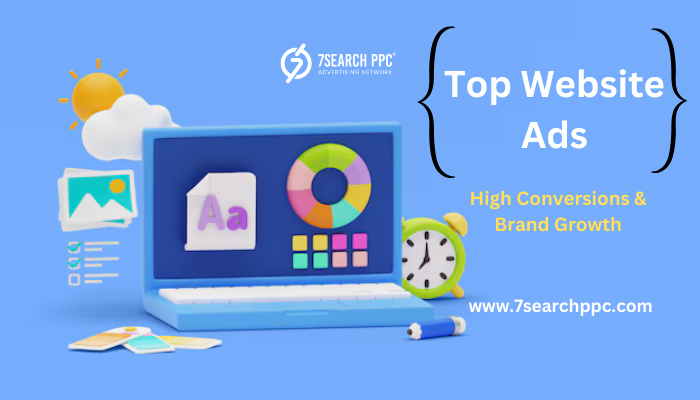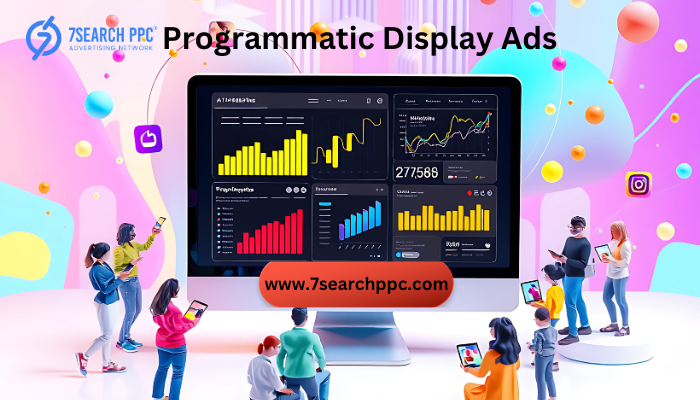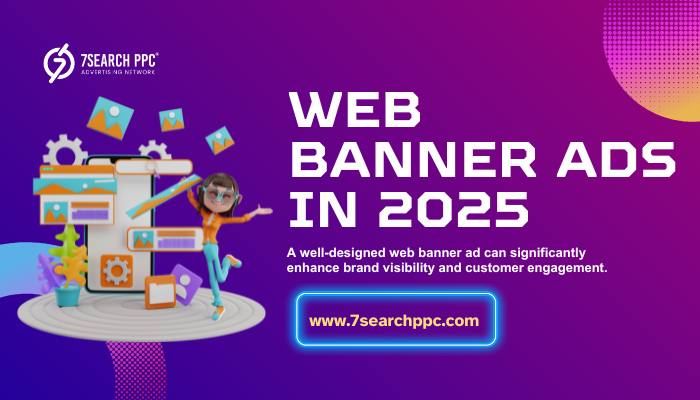Display Advertising in 2024: A Complete Guide to Success

Strong 8k brings an ultra-HD IPTV experience to your living room and your pocket.
In the ever-evolving landscape of digital marketing, display advertising continues to play a critical role in helping brands reach their target audiences. In 2024, with the rise of new technologies, platforms, and strategies, understanding the nuances of display advertising is essential for success. This guide will dive deep into what display advertising is, how it works, and the best practices to achieve success in your campaigns.
What is Display Advertising?
Display advertising refers to visual-based advertisements that appear on websites, social media platforms, and apps. These ads typically include images, videos, animations, or text and are designed to attract users' attention while they are browsing. Unlike search ads, which target users based on their search intent, display ads target users based on their behavior, interests, demographics, and more.
Display ads come in various formats and sizes and can appear in different locations across web pages. Their primary purpose is to create brand awareness, drive website traffic, and, in some cases, prompt direct conversions.
How Display Advertising Works
Display advertising works through networks like Google Display Network (GDN), which connects advertisers to a vast number of websites where their ads can be shown. Advertisers use these networks to bid on ad placements in real-time through programmatic advertising. The bidding system ensures that the right ad appears to the right audience at the right time.
Types of Display Advertising
Display advertising is versatile, offering a range of formats to meet different marketing objectives. Below are the most common types:
Banner Ads
Banner ads are the most recognizable form of display advertising. They are typically rectangular, image-based ads that appear on websites in various sizes. Banner ads can be static or dynamic and usually include a call to action (CTA) like "Learn More" or "Shop Now." These ads are placed on high-traffic websites to maximize visibility and impressions.
Video Ads
As video content consumption increases, video ads have become an integral part of display advertising. These ads play before, during, or after video content, or they may be embedded within websites. Video ads are effective for storytelling and building emotional connections with the audience, and they are often used in PPC ads campaigns to improve engagement rates.
Native Ads
Native ads are a type of display ad designed to blend seamlessly with the content on a website or platform. Unlike traditional display ads, which are visually distinct from the surrounding content, native ads match the look, feel, and function of the platform on which they appear. They often perform better because they are less intrusive and more engaging for users.
Key Platforms for Display Advertising
There are numerous platforms where you can run display advertising campaigns. Here are the top platforms to consider in 2024:
Google Display Network (GDN)
Google Display Network remains the most popular platform for running display ads. GDN allows advertisers to reach over 90% of internet users across millions of websites, apps, and Google-owned properties like YouTube and Gmail. It offers extensive targeting options, including demographic, interest-based, contextual, and remarketing.
Facebook Ads
Facebook’s advertising platform includes display ad options that appear on both Facebook and Instagram. With its highly detailed targeting features, Facebook Ads allow brands to reach specific audience segments based on behavior, interests, and demographic data.
Native Ads Platforms
Platforms such as Taboola and Outbrain are leading native ads platforms that help brands distribute native ads across high-quality content websites. These platforms use sophisticated algorithms to match ads with relevant content, improving user engagement and ROI.
Programmatic Display Platforms
Programmatic platforms like The Trade Desk and MediaMath offer advanced options for buying display ads in real-time through automated bidding systems. Programmatic advertising optimizes ad placements by using machine learning to analyze massive amounts of data and predict which users are most likely to engage with an ad.
Benefits of Display Advertising in 2024
Display advertising continues to provide significant advantages for brands looking to enhance their digital presence. Some key benefits include:
Wide Reach
Display ads allow you to reach a broad audience across various websites, apps, and social media platforms. With digital advertising budgets increasingly shifting toward display ads, brands can ensure consistent exposure to potential customers.
Visual Appeal
Unlike text-based ads, display ads offer the opportunity to use images, videos, and interactive elements to capture the attention of users. This makes it easier to convey your brand’s message and make a lasting impression.
Precise Targeting
With advanced targeting options, display ads can be shown to specific audiences based on demographics, interests, behavior, and even previous interactions with your brand. Retargeting ads, for instance, allow you to reconnect with users who have already visited your site but did not convert.
Cost Efficiency
Display advertising offers flexible pricing models, including PPC ads (pay-per-click), where you only pay when a user clicks on your ad. This ensures that your ad budget is used efficiently, as you’re paying for actual engagement rather than just impressions.
Display Advertising vs. Native Ads
Although both display advertising and native ads aim to engage audiences and promote products or services, they differ in how they appear and function.
Display Ads:
- Stand out visually from the website’s content.
- Often used for brand awareness and immediate action.
- More prone to ad fatigue or ad blindness.
Native Ads:
- Blend seamlessly with the platform’s content.
- Offer a more subtle form of advertising, which can result in higher engagement.
- Less disruptive to user experience, improving the likelihood of clicks and conversions.
Best Practices for Display Advertising Success
To ensure the success of your display advertising campaigns in 2024, follow these best practices:
Know Your Audience
Understanding your target audience is the first step in any successful display ad campaign. Use data to segment your audience based on demographics, interests, and behavior. Tailor your ads to speak directly to each segment’s needs and preferences.
Optimize for Mobile
With mobile devices accounting for more than half of all web traffic, it’s crucial that your display ads are optimized for mobile viewing. Ensure that your ad creatives are responsive, and consider using mobile-specific formats such as vertical video ads.
Use A/B Testing
To maximize the effectiveness of your campaigns, experiment with different ad creatives, copy, and CTAs. Run A/B tests to determine which combinations perform best with your audience, then scale the most successful variations.
Implement Retargeting
Retargeting is a powerful technique that allows you to show ads to users who have previously visited your website but did not take the desired action. By reminding them of your brand and offering incentives to return, you can significantly increase conversion rates.
Monitor and Adjust Regularly
The digital advertising landscape is constantly changing, so it’s important to continuously monitor your display ad performance and make adjustments as needed. Use analytics tools to track key metrics such as impressions, clicks, conversions, and return on ad spend (ROAS).
How to Measure Display Advertising Performance
To measure the success of your display advertising campaigns, focus on the following metrics:
Impressions
This metric measures how many times your ad was shown to users. High impressions indicate strong visibility, but it’s important to look at engagement metrics as well.
Click-Through Rate (CTR)
CTR is the percentage of users who clicked on your ad after seeing it. A high CTR indicates that your ad is resonating with your audience.
Conversion Rate
This measures the percentage of users who took the desired action, such as signing up for a newsletter or making a purchase. Conversion rate is one of the most important indicators of your campaign’s effectiveness.
Return on Ad Spend (ROAS)
ROAS calculates the revenue generated for every dollar spent on advertising. A positive ROAS indicates that your campaign is profitable.
Trends Shaping Display Advertising in 2024
As we move into 2024, several key trends are shaping the future of display advertising:
Artificial Intelligence and Machine Learning
AI and machine learning are increasingly being used to optimize display advertising campaigns. These technologies help advertisers predict user behavior, automate bidding strategies, and improve targeting precision.
Privacy Concerns and the End of Third-Party Cookies
With stricter privacy regulations and the phasing out of third-party cookies, advertisers are turning to first-party data to target users. Contextual targeting, which shows ads based on the content of a webpage rather than user data, is also gaining traction.
Increased Use of Video Ads
Video content continues to dominate online platforms, and as a result, video ads are becoming more prevalent in display advertising. Short-form videos, in particular, are seeing increased adoption due to their high engagement rates.
Common Challenges in Display Advertising
Despite its benefits, display advertising can present challenges:
Ad Fatigue
Overexposure to the same ads can lead to ad fatigue, where users become indifferent or irritated by your ads. To combat this, regularly refresh your ad creatives and rotate different ad formats.
Ad Blockers
A growing number of users are using ad blockers, which can reduce the reach of your display ads. To overcome this, focus oncreating high-quality, non-intrusive ads, such as native ads that blend with the user experience, making them less likely to be blocked.
Low Click-Through Rates
While display advertising can generate high impressions, the average click-through rate (CTR) is often lower than other forms of advertising like search ads. To improve CTR, ensure that your ads are visually appealing, have clear and compelling CTAs, and are targeted to the right audience.
Banner Blindness
Banner blindness occurs when users subconsciously ignore display ads because they have become accustomed to their presence. Using more engaging formats such as video ads or native ads platforms can help overcome this challenge.
Conclusion
Display advertising remains a powerful tool in 2024 for reaching a wide audience, building brand awareness, and driving conversions. With advances in technology, such as artificial intelligence, and shifts in privacy regulations, the landscape of digital advertising is evolving. By leveraging best practices like audience targeting, mobile optimization, and A/B testing, businesses can ensure that their display ad campaigns are successful.
FAQs (Frequently Asked Questions)
What is display advertising used for?
Ans: Display advertising is used to increase brand awareness, drive website traffic, and promote specific products or services. It’s an essential part of many digital advertising strategies because it helps brands reach their target audience across a variety of websites, apps, and platforms.
How is display advertising different from search advertising?
Ans: Display advertising uses visual elements (images, videos, etc.) and targets users based on interests, behavior, or demographics. Search advertising, on the other hand, targets users based on their search queries. While search ads are typically shown in search engine results, display ads are shown across websites and apps in PPC ads campaigns.
What are native ads, and how do they relate to display advertising?
Ans: Native ads are a type of display ad designed to blend seamlessly with the content on a website or platform. Unlike traditional display ads, which stand out visually, native ads match the format and function of the surrounding content, making them less disruptive and often more engaging for users.
How do I track the performance of my display advertising campaigns?
Ans: You can track the performance of your display ads using key metrics such as impressions, click-through rate (CTR), conversion rate, and return on ad spend (ROAS). Most advertising platforms, such as Google Display Network and native ads platforms, offer analytics tools to monitor and optimize your campaigns.
Note: IndiBlogHub features both user-submitted and editorial content. We do not verify third-party contributions. Read our Disclaimer and Privacy Policyfor details.







